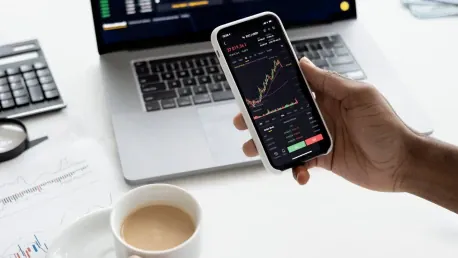In the fast-paced world of trading, technological advancements have largely overshadowed traditional methods. However, 2024 has seen a surprising resurgence of some of these age-old practices. This article delves into the reasons behind this trend and examines whether traditional trading methods are truly making a comeback.
The Resurgence of Open Outcry Trading
Historical Significance of Open Outcry
Open outcry trading, once the lifeblood of trading floors, has seen a decline with the rise of electronic trading. This method, characterized by traders shouting and using hand signals to communicate, was known for its vibrant and dynamic environment. Despite its decline, open outcry holds a nostalgic value and a sense of authenticity that many traders still appreciate. For decades, the tumultuous scenes on trading floors epitomized the heart and soul of financial markets. Traders, buyers, and sellers would congregate in a single space, creating an arena alive with noise and frenetic activity, an environment that contrasted sharply with today’s quieter, automation-driven processes.
The decline of open outcry trading can be attributed to the rise of digital platforms, which offer speed and efficiency that manual methods simply cannot match. The iconic scenes of traders jockeying for position and signaling frantically seemed to be a relic of the past until recently. Even so, the camaraderie, the instantaneous decision-making, and the raw, unfiltered access to market sentiment provided by open outcry continue to hold a unique place in the hearts of many in the trading community. Its potential for providing better price discovery in volatile markets remains a point of contention among proponents who seek a synthesis of old-school methods and modern technology.
MIAX’s New US Options Exchange
In a surprising move, MIAX announced the launch of a new US options exchange featuring a physical trading floor. This decision has sparked discussions about the potential benefits of open outcry trading. Proponents argue that it allows for better price discovery and human judgment, which can be crucial in volatile markets. The new exchange aims to blend the best of both worlds by incorporating modern technology while retaining the human element. The reintroduction of a physical trading floor by MIAX has injected new vigor into debates concerning the effectiveness of traditional methods versus contemporary ones.
Advocates of the initiative highlight that during volatile periods, human judgment can make swift, nuanced decisions that algorithms might miss. By equipping the trading floor with advanced technology systems, MIAX seeks to enhance the efficiency and speed of transactions while preserving the behavioral and psychological insights that human traders provide. Analysis of human-driven trades versus machine-driven trades often shows that the former can adapt to unexpected shifts and anomalies, harnessing intuition and experience. This blending approach suggests a potential shift where traditional practices might not only persist but also thrive in concert with technological innovations, catering to a diverse range of trading needs and philosophies.
The Appeal of Traditional Methods
Nostalgia and Authenticity
The resurgence of traditional trading practices can be partly attributed to nostalgia. Just as vinyl records and polaroid cameras have made comebacks, open outcry and other traditional methods evoke a sense of authenticity and connection to the past. Traders who have experienced both electronic and open outcry trading often speak of the latter’s unique energy and camaraderie. The collective nostalgia for open outcry is not merely sentimental but reflective of a desire for more engaged and tactile forms of trading. This longing for the tangible aspects of trading, where participants can see, hear, and react instantly to each other’s decisions, creates a robust counter-narrative to the prevailing dominance of electronic methods.
Beyond feelings of nostalgia, the resurgence also highlights a response to a perceived lack of human connection in modern trading. The collective presence of traders in an open floor setting fosters an environment where strategies can be directly influenced by the visible emotions and immediate reactions of participants. This sense of community and shared purpose among traders on the floor contrasts markedly with the isolated, screen-centric world of electronic trading. For many, the revival of these traditional methods is a step towards reclaiming a more collaborative and instinctive approach to buying and selling, one that brings back the intense human interaction that once defined the heart of the trading world.
Practical Benefits
Beyond nostalgia, there are practical reasons for the revival of traditional methods. Open outcry, for instance, can offer advantages in terms of speed and flexibility. In fast-moving markets, the ability to quickly communicate and make decisions can be invaluable. Additionally, the human element can help in interpreting complex market signals that algorithms might miss. Human traders can pick up on subtleties such as body language and tone, adding another layer of insight into the trading process. These non-verbal cues can often signal shifts in market dynamics before they become apparent through electronic indicators.
Moreover, traditional methods like open outcry provide a level of transparency that some argue is lacking in entirely digital platforms. In an open outcry system, every participant can observe the collective behaviors and responses of the market in real time. This transparency can lead to a more level playing field and foster trust among traders. The revival of these practices underscores their enduring relevance and suggests that there is a valuable place for human intuition and rapid, flexible decision-making within the modern trading ecosystem. Combining these methods with today’s technology might, therefore, create a more resilient and adaptive trading environment.
The Role of Experienced Professionals
Leveraging Expertise
The trend towards traditional methods is also reflected in the hiring practices of leading financial institutions. Firms like Citi and Millennium have been investing in experienced professionals who bring a wealth of knowledge and expertise. These seasoned traders are well-versed in both modern and traditional trading techniques, allowing them to navigate the complexities of today’s markets effectively. The emphasis on hiring skilled professionals who have honed their craft in various trading environments suggests a strategic preference for human insights over complete reliance on automated systems.
In particular, experienced traders can offer a level of discretionary judgment that is invaluable in unpredictable market conditions. Unlike automated systems, they can adapt strategies in real time based on unexpected developments or nuanced changes in market behavior. This flexibility makes seasoned traders an asset, especially in periods of high volatility. Their ability to synthesize information from multiple sources and act swiftly upon it is a critical component in achieving favorable trading outcomes. The move to prioritize such expertise embodies a broader trend in the industry that seeks to balance advanced technological tools with the irreplaceable value of human experience and decision-making.
Case Studies: Vincent Hall and You Khai Tan
Vincent Hall’s return to Citi as an equity trader after a stint at Citadel highlights the value placed on experienced personnel. Similarly, Millennium’s recruitment of You Khai Tan, a seasoned trader from UBS, underscores the strategic importance of leveraging expertise. These appointments reflect a broader industry trend of valuing human judgment and experience alongside technological advancements. The careers of Hall and Tan illustrate how seasoned traders can successfully transition between different firms and roles, bringing their wealth of knowledge to new environments and adding distinct value.
Both traders possess a deep understanding of market mechanics and the ability to adapt to various trading strategies, blending traditional methods with modern tools. Their roles at Citi and Millennium respectively underscore the critical insight that human expertise brings to the table. By integrating such highly skilled professionals into their operations, these firms signal a commitment to maintaining a judicious balance between human and machine inputs. This dual approach is seen as essential for harnessing the best of both worlds – the intuitive, adaptable nature of experienced traders, and the efficiency and speed of technological systems. This strategy aims to create a more comprehensive trading operation capable of responding to an array of market scenarios.
Balancing Tradition and Innovation
Integrating Technology with Traditional Practices
While traditional methods are making a comeback, they are not replacing technology. Instead, the industry is seeing a blend of both. For instance, MIAX’s new exchange will use advanced technology to support open outcry trading. This integration aims to enhance efficiency while preserving the benefits of human interaction. The integration signifies a recognition that while technology offers countless advantages, the human element remains vital for nuanced decision-making and adaptability.
Traders equipped with both traditional skills and knowledge of advanced digital tools are poised to lead in this hybrid environment. The goal is to create a system wherein the strengths of each approach complement one another, providing a more robust and flexible trading framework. For example, technology can manage large data sets and process transactions swiftly, while human traders bring situational awareness and intuition that’s crucial during periods of volatility. By combining these elements, trading floors can maximize both efficiency and insight, resulting in a more dynamic and responsive market environment.
Future Prospects
The future of trading will likely involve a hybrid approach, combining the best aspects of traditional and modern methods. As the industry continues to evolve, the ability to adapt and integrate different practices will be crucial. This balanced approach can provide a competitive edge, offering the flexibility to respond to market changes effectively. The trend suggests that firms which embrace a diversified strategy—leveraging both technological innovation and human expertise—will be more resilient and better positioned to capitalize on emerging opportunities.
Looking ahead, the challenge will lie in seamlessly integrating these methods to create an optimal trading ecosystem. Continuous advancements in technology will undoubtedly play a role, but the nuanced understanding and quick reflexes of human traders will remain invaluable. As the trading landscape evolves, those who can skillfully navigate the complexities of this mixed model will likely set the standard for future practices. Embracing both the old and the new, the trading industry finds itself on the brink of an era where adaptability, innovation, and tradition converge to shape its future dynamics.
Conclusion
In the dynamic world of trading, technology has predominantly dominated and transformed the landscape, often eclipsing traditional methods. Yet, 2024 has witnessed an unexpected revival of these older practices. This article explores the reasons behind this fascinating trend and investigates whether these traditional trading methods are genuinely experiencing a revival or if this phenomenon is just a passing curiosity. By examining the potential benefits, challenges, and the current market’s response, we aim to provide a nuanced perspective on whether these age-old strategies are finding renewed relevance in today’s technologically driven trading environment. With insights from industry experts, traders, and market analysts, we will analyze the factors contributing to this resurgence and speculate on the future trajectory of traditional trading methods. By understanding the motivations and the context of this revival, we can better grasp its implications for the broader trading industry and determine if these time-tested strategies have a place in the modern financial market.









